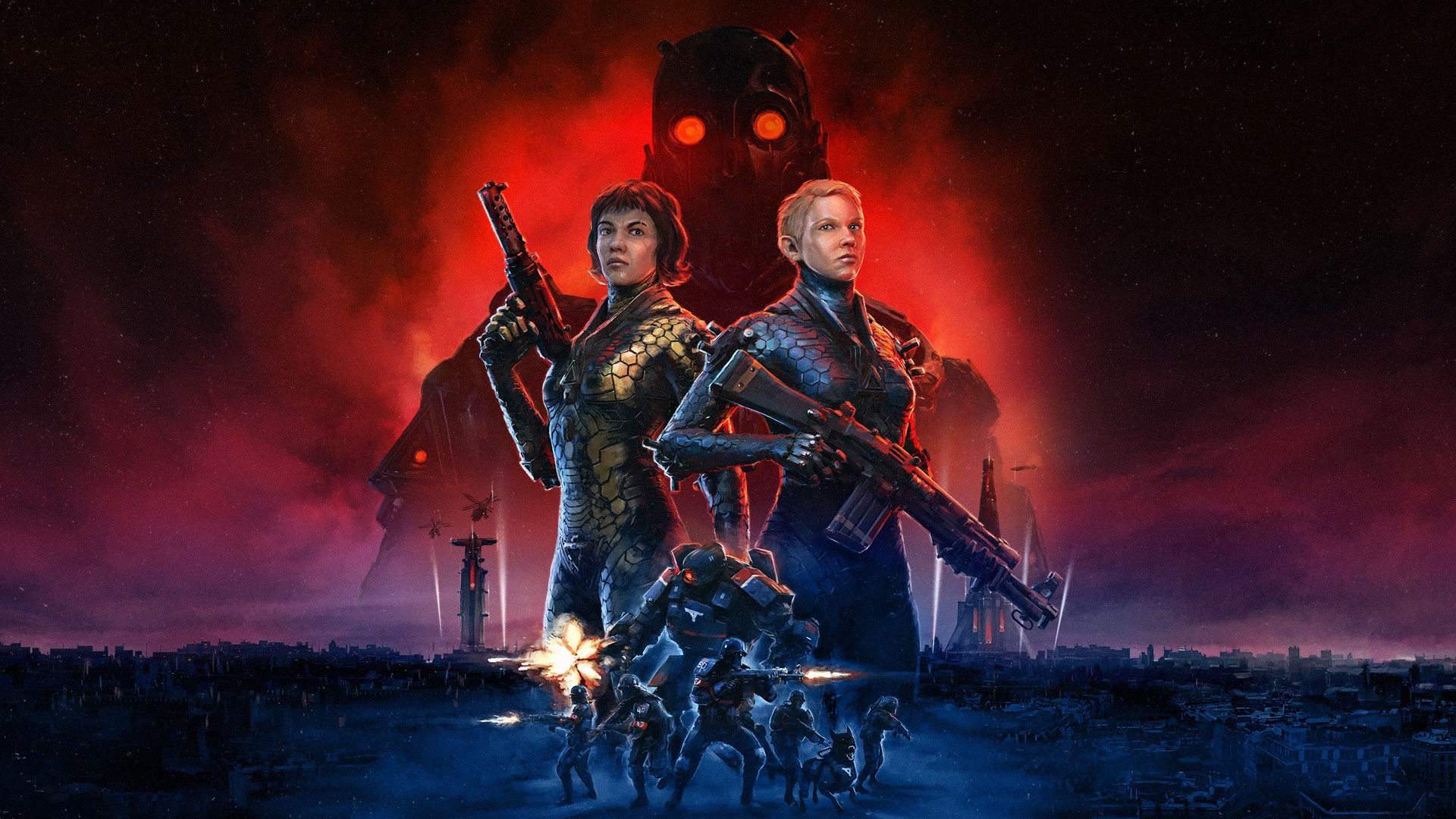Before the undead became gaming’s enemy of choice, it was Nazis. Series like Medal of Honor and Call of Duty made World War II shooters especially popular, but well before them there was Wolfenstein. Hell, that venerable and iconic franchise is still around today, having even had a resurgence back in 2014, with the release of The New Order, which was then followed by the likes of The Old Blood and The New Colossus.
Now, with the debut of Wolfenstein: Youngblood, Nazi killing has become something to do with friends.
After releasing three solo Wolfenstein outings, Bethesda, MachineGames and Arkane Studios have returned with another outing that doesn’t fit the familiar mold. Instead of being a one versus them all campaign, which draws on and pays homage to the shooters of yesteryear, Youngblood is a different beast. It favours co-op over going it alone, and does so with lots of teenage angst and a bit of 80s cheese. It promotes its cooperative focus, by featuring two main characters in series protagonist B.J.Blazkowicz’s teenage daughters, Jess and Soph.
When you think Youngblood, picture the shooting mechanics and difficulty of modern day Wolfenstein mixed with the social gameplay, progression and recurring enemies of games like Destiny and Borderlands. Just make sure to do so on a smaller scale, because unlike the other two this happens to be a budget priced release. There are obvious similarities, though, and this reeks of Bethesda’s attempt to capture that type of market without taking too much of a risk.
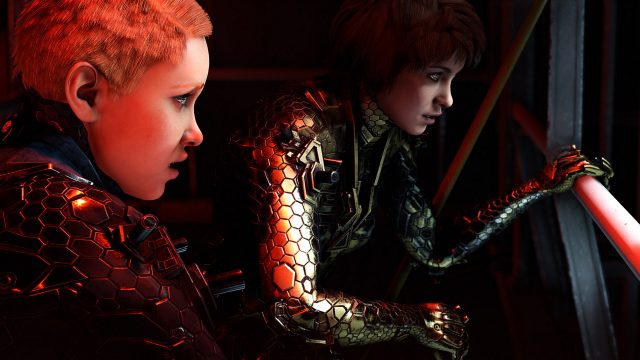
Things pick up in 1979, and find B.J. and his family living in a very rural part of America, where they hunt their own dinner and prepare for another potential Nazi attack. We find the muscle bound badass out in the middle of nowhere, teaching one of his young kin how to both become one with a gun and hunt effectively. Meanwhile, his other daughter (Soph) is pounding a punching bag at home.
Life seems alright for the Blazkowicz clan, though they’re always on guard and never allow themselves to fully relax. This training comes into good use soon afterwards, as the story quickly shifts to 1980 and the unexpected disappearance of the iconic hero. Alarmed, the daughters conspire with their friend Abby — the computer wizard daughter of the head of the FBI — to go to Europe in an attempt to locate and rescue their father, going so far as to steal an FBI helicopter behind their moms’ backs.
Yes, this is the type of game where teenagers fly helicopters, shoot Nazis, do funny salutes and joke around as they do so. It is Wolfenstein after all.
After overhearing a conversation, the girls peg their father’s location as being in France, and find themselves meeting with members of the French Resistance in Paris’ underground catacombs. Soon after, they become the Resistance’s main soldiers, and are given missions to carry out in different parts of the city. All the while, the catacombs remain their base of operations, and offer the opportunity to stock up on health, ammo and collectibles.
The general set-up will be quite familiar to most, as it’s not very unique. Wolfenstein: Youngblood‘s core gameplay revolves around talking to an NPC (all of whom are in the catacombs), getting a mission from them and then traveling to the part of the city where its objectives are located. Following that, it’s up to you to find or kill said target, and take out any Nazi soldiers, drones, robotic dogs or canines carrying explosives that get in your way. Then, once that has been accomplished, it’s time to take on a new mission and do whatever it entails.
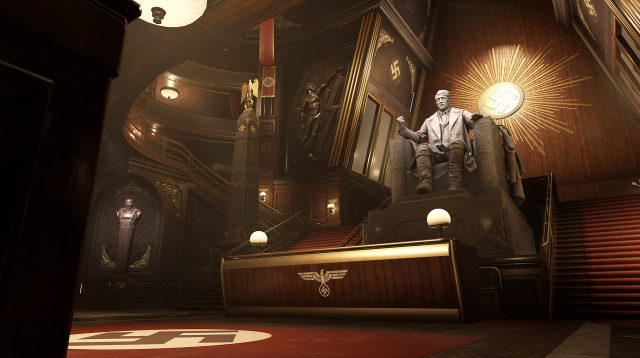
There are a few different parts of the city, as well as some underground areas and raid-focused towers that you’ll venture to throughout your time with this game. This includes a few major regions that you’ll find yourself going back to over and over again, as you attempt to level up enough to take on the campaign’s four main missions (which doesn’t take its bland opening level into account). Those main quests task you with overtaking those aforementioned towers in raid-like fashion, with the goal being to kill each one’s major robot boss and the enemies it’s protecting. Why? Each tower’s two special commanders carry keys that, when used in conjunction with one another, unlock information that the Resistance needs.
There’s a decent amount of side missions, as well as random objectives that will pop up and ask you to plant car bombs, free civilians from armed guards or steal a decryption device. However, they’re all pretty repetitive and don’t offer a lot of variety. Thus, you’ll be confined to a pretty similar loop throughout Wolfenstein: Youngblood. Some will like this and others will tire of it quickly, because it’s very repetitive in nature. That’s because said loop involves visiting the same areas, killing many of the same enemies over and over again, and going after similar objectives. There is some variety, but nothing close to what you’d find in a Borderlands game or anything like that.
The main raid missions are also pretty cookie cutter, as you’re just going through rooms and rooms full of baddies, en route to a big boss. Even the bosses themselves are pretty underwhelming, which is unfortunate. The game’s first big bad is actually quite awful, and the other four are just okay.
Furthermore, after beating a boss (such as one of the massive Brother robots), you have to backtrack all the way through their towers in reverse, before looking for and using a metro station in the outside world. This means fighting a lot of the same enemies you already dealt with on the way in.
Then again, that’s kind of the theme of this game: Being just okay. There’s nothing particularly special about this thing, nor is there anything particularly bad about it. It’s decent fun for a little while, and has a discounted price tag that supports it being that way. Those expecting a masterpiece that they’ll keep coming back to for months and maybe even years — like with Borderlands 2 — won’t exactly find that here and may be disappointed. They’ll be asking for too much from this title.
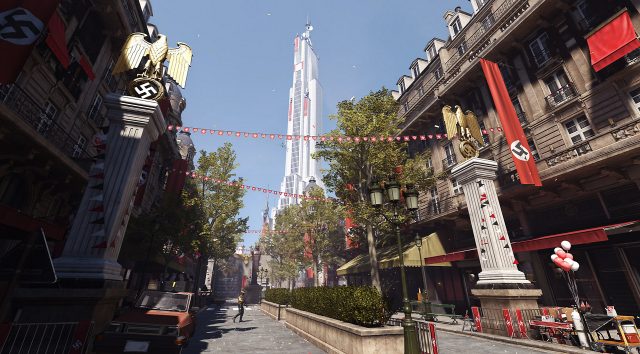
The best thing about Youngblood happens to be its shooting mechanics, which are as solid as you’d expect. There are lots of guns (pistol, assault rifles, shotgun, sub-machine gun and special weapons that use lasers, electricity and explosives as ammo), and they all promote experimentation. In fact, at the base of this game lays a system that uses icons to identify the types of armor that each enemy is using. Why does it do this? To tell you which type of weapon it’s weak against. The problems with this system are twofold. First, it’s never properly explained. Secondly, there are simply far too many enemies coming at you to allow for time to think and strategize.
After a while, I started to main the shotgun, which seemed to be the best and most powerful option. I’d sometimes use other weapons — especially when I ran out of ammo for the shotgun — but none ever felt as great.
The special laser, electricity and explosive weapons serve a purpose outside of being special weapons that fire limited but pretty damaging ammunition. In a Metroidvania style set-up, each one can be used to unlock certain doors, behind which ammo, health and collectibles (cassette tapes, 3D glasses, written documents and more) hide. Early on, similar doors just require you to find numerical codes or ‘crush’ them using Jess’ special ability, which allows her to damage things and enemies by running into them. It’s a pretty basic, and honestly underwhelming, power. Soph, on the other hand, can turn invisible at will, and offers stealth through that. However, given the amount of enemies, stealth isn’t always an easy option.
While there are a ton of collectibles to find (which can be made easier by unlocking a perk that highlights all of them on your mini-map), there aren’t a ton of secret doors or areas. There are some, sure, but the doors that require those particular weapons are limited. They aren’t exactly a selling point, and this isn’t really all that much of a Metroidvania style shooter. It just shares some similarities, like what I mentioned above, plus its heavy reliance on backtracking.
Like the past few Wolfenstein games, Youngblood is also pretty difficult. It’s not as terrible as Wolfenstein II when it comes to unfair challenge, but it does have a good amount of chokepoints and some very powerful enemies that are a bitch to take down. Encounters rarely consist of just one or two foes, as it’s usually you and your partner (or the A.I.) against a large group. For this reason, I dropped down to casual (easy) pretty quickly, and even still had some problems. Meanwhile, I’m someone who’s played tons of shooters, and has completed quite a few on hard or very hard. Though, with that being said, I do find my skills declining a bit as I age, and also because I don’t sleep well.
MachineGames seems to think that this series needs to borrow from Dark Souls, and be the Soulsborne of shooters in terms of difficulty. This is not something I agree with at all, as I feel that their reliance on chokepoints and overwhelming difficulty detracts from their games’ accessibility and enjoyment levels. I, for one, practically hated Wolfenstein II: The New Colossus, and was excited when I saw the credits roll. That game was never much fun, because it was nothing but near constant chokepoints and difficulty settings that were almost meaningless. On the contrary, I thought that The Old Blood was pretty good, and that The New Order was decent but overrated. I had more fun with Raven’s Wolfenstein, but that’s a personal preference.

Thankfully, Wolfenstein: Youngblood‘s difficulty isn’t as severe as its predecessor’s, though it still gets crazy at times. The final boss is a particularly cheap bullet sponge, especially since lots of powerful enemies accompany him.
At the start, the A.I. was actually pretty impressive. I didn’t have another human being to play with, so I just went it alone, though a few people dropped in via online co-op without me even noticing, since the game never alerted me. As I progressed, though, it started to get worse. Early on, Soph would revive me almost instantly, and wouldn’t try to one man army it all too much. That changed near the end, to the point where she’d just keep shooting enemies instead of even trying to revive me, despite me repeatedly pressing A to call her. This led to some annoying deaths, even a couple during the final boss.
Speaking of deaths, it’s important to note that this particular game does things differently in that respect. For starters, Jess and Soph share a pool of three lives. Once those lives are gone, they’re completely dead and must restart their battle. If you’re downed, you can be revived, but if you’re both downed then one player must bleed out and then revive the other in order to make sure that only one shared life is lost. It’s a relatively sensible system, I guess, but a flawed one nonetheless. There’s the aforementioned A.I. issue, and then there’s the fact that, if you do die, you’re sent back to the start of the area you’re in. If you’re fighting a boss that has a couple of stages, you’re sent back to the start of the battle and won’t have the same number of lives or perhaps even the same amount of ammo (I didn’t notice, but have heard complaints about this) as you started that particular fight with. Needless to say, it can be frustrating and isn’t very player friendly, especially with the chokepoints and occasional cheapness of the difficulty. It also doesn’t help with the repetition problem, or the related tedium.
Those shared lives are shown as hearts, and are not replenished without effort. To replenish them (one by one), you must find special crates, then use both characters to unlock them. Said crates are spread throughout the game world, but are far more limited than they should be. They also don’t often stand out, and must be searched for. There is one in the catacombs hideout, but if you want to keep using it, you’ll need to leave and then come back.
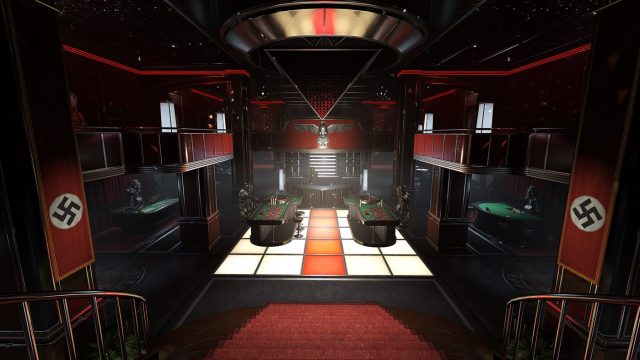
Of course, the goal here is to level up and then overtake the bad guys. Most enemies scale with you, but certain main quests have level requirements. For instance, the Brothers require you to be level 20 or above. It didn’t take me long to get into the high 20s, though, as I was around level 26 after my first four hour session with the game. I finished it at level 34 or something like that, and played for maybe 8 hours total. I leveled Jess up quite a bit, and focused on health and shields, while also spending money on weapon upgrades and different armor skins for the both of them. This length surprised me, because the developers had said to expect 25-30 hours of play time.
For the most part, the Xbox One version of this game ran well on the Xbox One X review unit at our office. The frame rate was mostly smooth, the gameplay was fast and furious and the sound was very boisterous. Cheesy as hell, and sometimes cringeworthy thanks to certain dialogue and animations, but loud and appealing as far as shooting goes. There was one particular issue, though, and it’s something I found odd even though I’ve experienced it in at least one other game. For whatever reason, whenever I’d press right on the d-pad to turn on my flashlight, the audio would pause, stutter and glitch. Most of the time this would only be momentary, but there was one time where the music kept going in and out (and was skipping when it did work) until I traveled to a different part of the map.
If you do decide to play this game, don’t do it for the story or the cutscenes. Don’t do it for the dialogue either. While the story and writing may not be as weird as they were in the past game, both are very cheesy and sometimes laughable here. This didn’t bother me as much as it’s seemingly bothered others, but I went in with lower expectations because I pretty much hated Wolfenstein II.
With all that having been said, Wolfenstein: Youngblood is a tough game to score. It’s not particularly special, nor incredibly good, but was pretty fun for several hours. After that, it got pretty tedious. Still, I found it to be a lot more entertaining than the last game (which isn’t saying much), and also appreciate that Bethesda knew enough to sell it at a budget price instead of trying to charge people a full $60 USD or $79.99 Canadian. It’s also nice that they’ve included the buddy pass in the Deluxe Edition, allowing one’s friend to download and play the game without buying it. I respect those decisions, and both make it easier to recommend this short, but somewhat fun experience.
This review is based on the Xbox One X version of the game, which we were provided with by its publisher.

